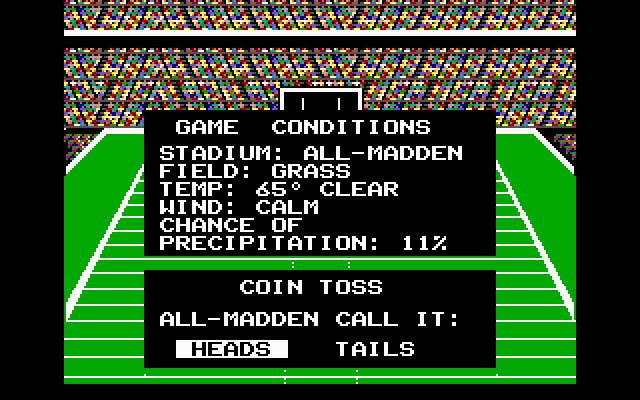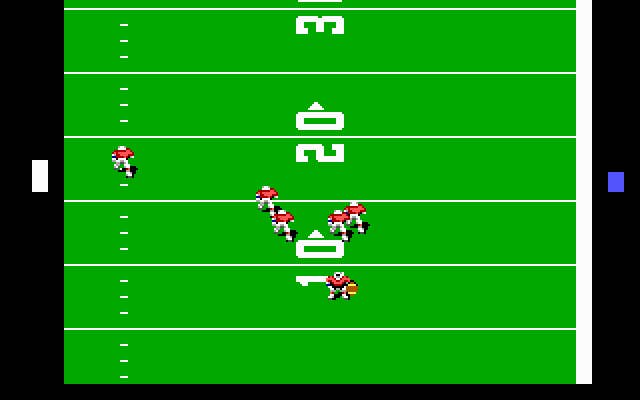How John Madden Changed Sports Games Forever
25 years ago, America's most boisterous sportcaster demanded greater realism in games.
This article first appeared on USgamer, a partner publication of VG247. Some content, such as this article, has been migrated to VG247 for posterity after USgamer's closure - but it has not been edited or further vetted by the VG247 team.
Even though I grew up in West Texas, I never quite got the appeal of football. (Distinction for our European visitors: I'm referring specifically to American football here, though you shouldn't feel left out. The appeal of your version eludes me as well.)
While everyone else was out cheering on a bunch of meatheads trying to win glory for their hometown by shuffling a hunk of dead pig back and forth across the lawn, I was busy trying to save Monsteropolis from the mad schemes of Dr. Wily. Priorities, you know?
But even though I grew up as a short, bookish, out-of-shape nerd with terrible vision problems that made any sport involving the relative motion of small objects approximately impossible for me, I could still enjoy sports through the medium of video games. Even football, which in its abstract digital renditions transformed from an exercise in concussive collisions by grunting giants and into a wild melee of moving objects and careful evasion. The microcephalic brutes in my gym class may have crushed me into a sad, pale paste every time our instructor forced us to play field football, but in Tecmo Bowl, I stood a chance to best any comer -- and I didn't even need to know the real ins and outs of the game.

That changed in the summer of 1988, when Electronic Arts launched John Madden Football. Madden was a key addition to EA's licensed sports lineup, which had kicked off (or rather, tipped off) five years prior with the revolutionary basketball game Dr. J and Larry Bird Go One-on-One. After One-on-One's success, EA founder Trip Hawkins had subsequently approached legendary coach and sportscaster John Madden about a similar endorsement for the company's football game, but Madden insisted any game bearing his name go beyond the superficial depth of contemporary football games and pursue both the full scope and the underlying strategy of the sport. EA spent years fine-tuning their creation to their licensor's standards. Their effort paid off, giving them what would become perhaps the all-time best-selling video game franchise in America.
But Madden also changed the entire nature of video football games at large, bending them away from casual affairs that anyone could enjoy and into deeper simulations designed for people who immersed themselves in the real-world sport. Atari's arcade football game bore only the loosest resemblance to what actually transpires on the gridiron, but damn if it wasn't fun shuffling those Xs and Os around the field. Admittedly, that thrill really had more to do with the physicality of the arcade machine, which operated through a trackball controller that demanded considerable player exertion. It was more about simulating the excitement and adrenaline of playing as a running back than about accurately reproducing the mechanics of the sport, but that's what made it so fun.
Madden, on the other hand, was aimed at armchair quarterbacks: The guys who'd sit back on Sunday afternoon, beer in hand, and second-guess every call Tom Landry made. The guys who just knew that if it had been them out there pacing the sidelines in a suit and fedora, they'd have done it way better. Madden offered them the opportunity to prove it for themselves, giving them access to actual plays. It even included printed play books -- one offensive, one defensive -- as supplemental material for the game. John Madden Football made football games into something more than just an arcade-style rush to the end zone, emphasizing the importance of both strategy and stats.

As football simulations went, Madden was unparalleled in its day and helped establish the modern standard to which all sports games aspire. While EA licensed only Madden's name and likeness rather than those of players or the trademarked branding of teams, the game designers based the two available teams on contemporary NFL players, with details changed just enough to avoid a lawsuit but not so much that avid fans couldn't tell exactly who the fake players were meant to be. This minor touch of verisimilitude made immersion that much easier, as the game incorporated actual stats derived from each team member's corresponding real-world counterpart that helped determine how the player's decisions would play out.
Adding further complexity to the simulation, Madden allowed any number of other variables to affect matches. Players could select from several inclement weather types, allow tracking of different penalties, and even enable negative effects like player fatigue and injury. About the only thing missing was season play and a career mode; in its original incarnation, John Madden Football simply consisted of single match-ups. But those isolated games offered unprecedented detail and substance, with John Madden himself available to offer strategic advice as needed. And, it should be noted, the game didn't consist entirely of thumbing through play books; once the ball was hiked, players took an active role in controlling the quarterback and receivers as well. The action was a good deal more sedate than something like Atari Football, but it still went a long way toward creating greater immersion and involvement.

An immediate hit, John Madden Football became a major franchise for EA. The 1988 original had been designed for personal computers, but with the advent of the Sega Genesis and EA's unique licensing deal with Sega, Madden soon shifted focus to consoles, where it made an even bigger splash and launched an even bigger revolution. While consoles had long been regarded as a home for superficial, arcade-like sports experiences, Madden demonstrated their potential for more engrossing takes on the hobby. On a system connected to the same television that people used for watching Monday Night Football, Madden's armchair quarterback analogy became even more compelling. Madden played a major part in the way Genesis shattered Nintendo's monopoly on the U.S. gaming market, and it set the tone for games across the entire spectrum of sports, especially once EA ponied up the cash for an official NFL license and John Madden Football became Madden NFL.
And yet, despite its revolutionary design and the gains it represented for console gaming, I can't help but feel that a little something was lost in the rush to duplicate Madden's success. Football games quickly mutated from dumb arcade fluff to slow, thoughtful simulations, with only the occasional outlier (e.g., Mutant League Football, NFL Blitz) to provide a counterpoint. As with so many other genres, sports games became focused on offering the deepest possible experience to super-fans.
What sets Madden apart from other genres that have catered to their hardcore fanbases and isolated themselves in a niche is that unlike shoot-em-ups and fighting games, football has an audience of millions of existing super-fans to tap into -- an external frame of reference. Where arcade shooters evolved from the simple, accessible Space Invaders to experts-only bullet-hell madness, turning off all but a dedicated few in the process, it's the more casual sports audience that's left out in the cold in the post-Madden era. Guys like me just wanna score a quick touchdown. We have no idea what a "tight slot formation" is -- heck, I'm not even sure if it's something I can talk about in polite company. But for the millions who own an Xbox 360 just to have access to the latest Madden each year, sports games didn't come to an end in 1988. On the contrary: For them, that's when video games in general began.
